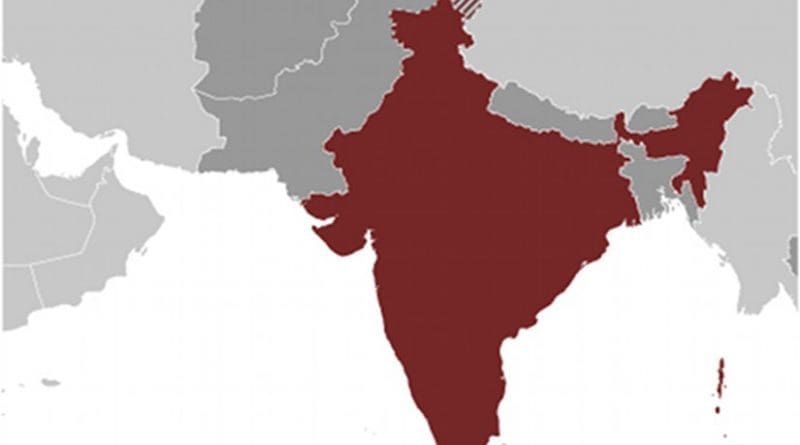The Islamic State Threat: India Is Not On The Frontline – Analysis
By Observer Research Foundation
By Manoj Joshi*
In recent times we have been hearing a great deal about the Islamic State (IS) and how it poses a threat to India. In July, the newspaper USA Today carried a report claiming that the IS was contemplating raising a terrorist army in Pakistan and Afghanistan and launching an attack on India which would trigger off the “end of times” war promised in Islamic theology. This was based on a document written in Urdu, captured from a Pakistani national close to the Tehreek-e-Taliban Pakistan (TTP).
According to specialist Jessica Stern, the document is more of a wish list of the IS, and does not reflect its actual capabilities in the South Asian region. The idea of an “end of times” conflict has pre-dated the IS in this region with many of those involved in fighting with the Taliban believing that they were part of a struggle which would see the Armageddon-like battle in the region of Khorasan (approximating north-eastern Iran and northerrn Afghanistan) which would result in the entire world coming under the sway of the sway of the Mahdi.
With groups like the Taliban afloat in Afghanistan, such millenarian thinking is not unusual. It also sometimes reflects the semi-educated Maulvis who dot the landscape of South Asia. But from here to extrapolate some imminent danger to India from the Islamic State is a leap too far. However, it clearly seems to be worrying the authorities in the Union Home Ministry, who called a meeting last month of 12 state government officials to frame a strategy against the IS threat. According to a newspaper report, the meeting took up the issue of a new de-radicalisaion strategy which would use moderate Muslim clergy to create a “counter-narrative” to challenge the jihadi ideologies while at the same time the intelligence authorities would maintain a surveillance of cyber space, the recruitment ground of the IS.
As of now, no one is clear as to how many Indian Muslims have been recruited by the IS. Government estimates put it at about a dozen. But so far they have managed to lay their hands on only one returnee Areeb Majeed one of four Kalyan men who returned from Syria earlier this year. Considering that India has a Muslim population of 180 million, these numbers are statistically equal to zero.
We also need to take into account another factor. For the present, the IS orientation is towards the Arab world. Unlike the Al Qaeda, which was a global franchise, the IS is a proto-state with a specific geographical location. And, as of now, it is far from India. It is a big problem for many developed countries because they worry that their young men who are flocking to the standard of the IS will return and form the core of a new generation of hardened, violent Islamist extremists. Again, Indian Muslims, like many other Indians are poor and cannot afford to simply fly off to Turkey or Iraq and join the IS. Further, in the case of India, the IS’ vaunted ability to radicalise people through the internet is limited because our internet coverage is woeful, being virtually non-existent for the poorer people.
There is, of course, the danger that exists of the IS taking root in Afghanistan and Pakistan. Both countries are already awash with jihadi ideologies. Further, the revelation of the death of Mullah Omar and the possibility that the Taliban will fragment, leaves an opening for individual Taliban leaders, some of who have already announced a shift of loyalty to the IS. In Pakistan, the army offensive against the TTP can also have the consequence of fragmenting the outfit and leaving a vacuum that can be filled by mullahs aligning themselves with the IS. In either case, that battle will have to be fought on the ground there. India is not on that front line. Recall the many alleged intelligence alerts claiming that the Al Qaeda was entering the battle in India. Nothing came of them.
What the Union Home Ministry needs to worry about are the growing instances of communal violence in the country in the past year. They need not concern themselves over the Islamic narrative in India which, in any case, has produced a remarkable quiescent Muslim community in an era of turmoil in the Islamic world. Hindutva outfits have stepped up their pressure on the Muslim community and we are likely to see more violence in the run up to the state Assembly elections in UP in 2017. This is bad news, because at the root of radicalisation is usually a sense of grievance. While in many instances, grievances are manufactured, in the case of India, some people are bent on creating them through a strategy of overawing the Muslim community through a policy of violence and discrimination. But, the policy is more likely to end up tearing the social and religious fabric of the country apart, the surest way of mortally damaging the unity and integrity of the nation.
*The writer is a Distinguished Fellow at Observer Research Foundation, Delhi
Courtesy: www.mid-day.com

